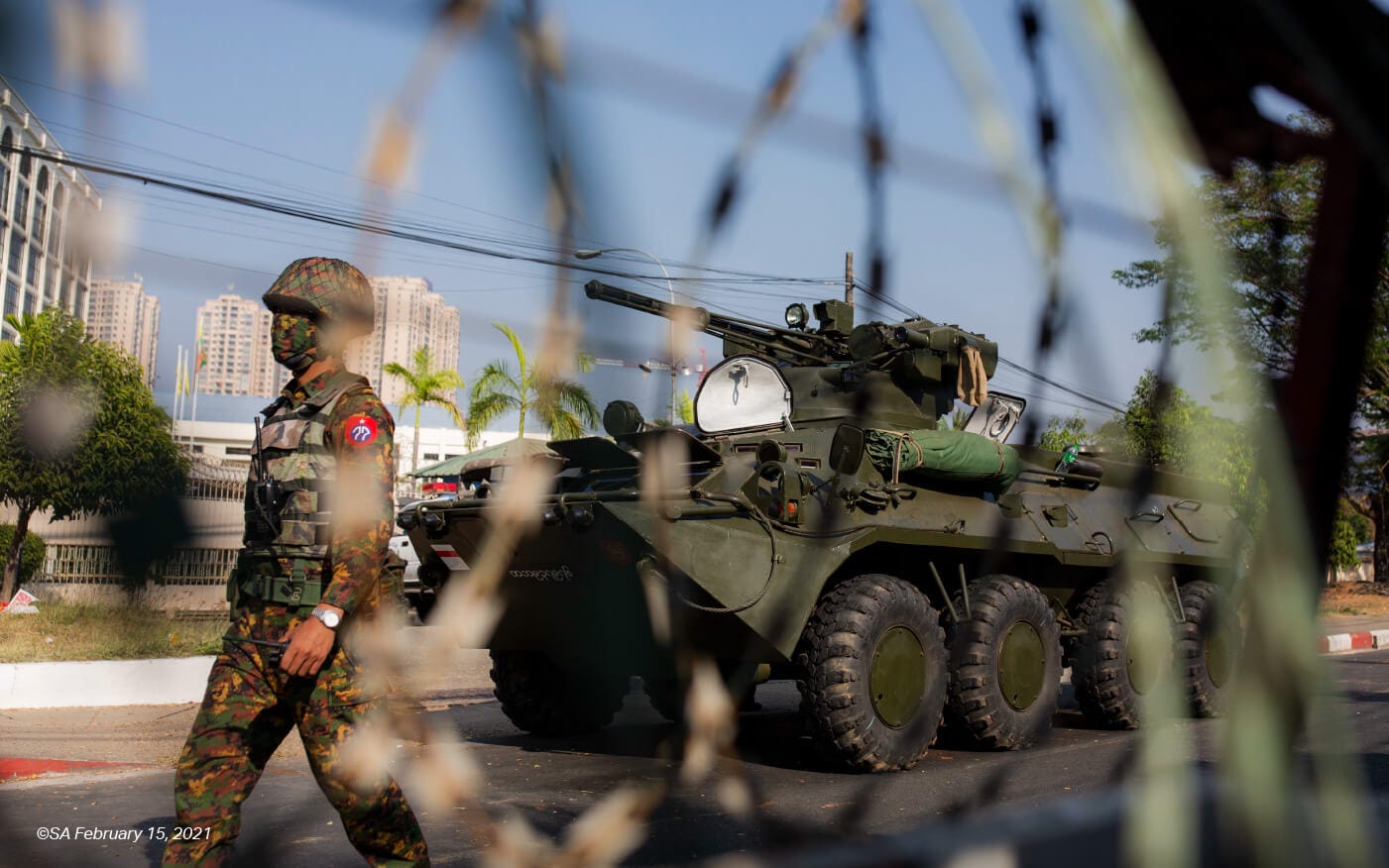David Scott Mathieson

Myanmar’s civil war entered a dramatic new phase late last week with an attack by multiple drones against the capital Naypyidaw. An estimated 23 fixed-wing drones targeted the military headquarters and the air force runway at Naypyidaw airport, and reportedly also targeted the residence of the head of the State Administration Council (SAC), Senior General Min Aung Hlaing.
While the military impact apparently was negligible, the impact is likely a psychological blow for the regime. Months of battlefield losses for the military have followed the rebels’ major Operation 1027 offensive in Northern Shan State, robust insurgent gains in Arakan, Karen, and Karenni State with Operation 1111, with the loss of some 50 towns, scores of bases of various sizes, hundreds of soldiers killed and captured. Foreign backing for the regime has continued to peel away, especially with Beijing having gone neutral, with only Moscow continuing to provide support.
For the junta to have its inner sanctum violated so dramatically delivers a symbolic shock wave that supersedes its military value. By one count, more than 300 bases and towns in total have been wrested from military control by anti-junta forces since the 2021 coup, including crucial border crossings. Residents of Yangon, which remains the commercial capital of the country, have told Asia Sentinel they are afraid of venturing outside the city.
The Ministry of Defense of the opposition National Unity Government, formed by the rebels in the wake of the junta’s February 2021 military coup, claimed responsibility for the attack several hours afterwards. In a brief statement, the rebels claimed that “Special Force units of the People's Defense Force, alongside Shar Htoo Waw's Kloud Drone Team, targeted the military headquarters. Similarly, the Special Forces of the People's Defense Force (PDF) and the Shar Htoo Waw's Lethal Prop Weapon Team launched attacks on Alar Air Base.” There are unconfirmed reports that a number of officers were injured in the attack on the military HQ.
The junta’s state media claimed that the military air defense system “successfully intercepted all the fixed-wing aircraft. As a result of this prevention, two of the aircraft exploded in the air before reaching their targets, and the remaining fixed-wing planes were shot down. Thirteen of the aircraft that crashed to the ground after being intercepted were seized.” Photos published show several fixed-wing drones, some seemingly intact and others clearly damaged. There were no reports of damage to installations or military aircraft at the airport.
This attack seemed less a ‘drone swarm’ than a ‘drone wave,’ but it does indicate a level of sophistication and battlefield innovation that has become more prominent in recent months. Clearly, the resistance has been steadily augmenting its drone strike capability, both for surveillance and dropping increasingly heavy ordnance. In multiple locations, the conflict in Myanmar has become a drone war, with the SAC and the resistance increasingly using sophisticated drones which are both commercially sourced and craft-built by the People's Defense Force.
It appears that the fixed-wing drones are craft-manufactured, possibly from established kits or through 3D printing, which various resistance forces have been using for some time. Many PDFs and ethnic armed groups (EAOs) in Myanmar assemble drones by studying YouTube videos and sourcing online shopping options. These are then modified by young technicians from tech-savvy resistance fighters who have modified quadcopters, multi-rotor drones, and fixed-wing craft, attaching mortar rounds to bomb SAC bases, convoys, and personnel, and in a number of dramatic incidents also helicopters. There are literally scores of rebel drone units operating around Myanmar with names such as Federal Wings and Salingyi Spaceman Drone Army, often sustained by donations from the Myanmar diaspora around the world. In an asymmetric conflict, the drone is helping to equalize the battlescape, and is a clear indication that the resistance has been methodically making progress.
Min Aung Hlaing acknowledged the scale of the UAV threat in a major speech in late November 2023 to the military council, in reference to Operation 1027. “In reviewing incidents which happened in the northeast area of Shan State, excessive strengths and technologies were deployed, and military drones were used to drop bombs in attacks. They have so far used more than 25,000 drop bombs.” ‘Drop bombs’ has entered the Myanmar military vernacular.
Yet despite the undoubted boost to resistance morale this attack should excite, the battle for middle Myanmar has a long way to go. The regime has been collapsing along its frontiers, especially in recent weeks with an offensive by the Kachin Independence Army (KIA) and its Operation 0307 that has dislodged the Tatmadaw from key bases, but targeting them in the flat central plains of the country, with major military bases and industrial capacity, airfields and reserves, utilizing a strategic depth that is often underestimated, they can sustain themselves for some time.
But in response to battlefield losses, the military has been increasingly turning to punitive airstrikes, artillery bombardment, and increasingly sophisticated UAV strikes of their own, with more military-grade equipment sourced from its close relationship with Russia. The strike underscores Naypyidaw’s relative vulnerability and should rattle the regime and its supporters that their central redoubt could be targeted more in the coming months. The regime will likely have to divert resources to tighten Naypyidaw’s defenses, which should ideally shake the internal complacency at a higher command level. But then the generals have demonstrated a consistent cognitive obtuseness to the conflict since the coup three years ago. But a drone strike right on your headquarters should rattle any complacency.
No comments:
Post a Comment